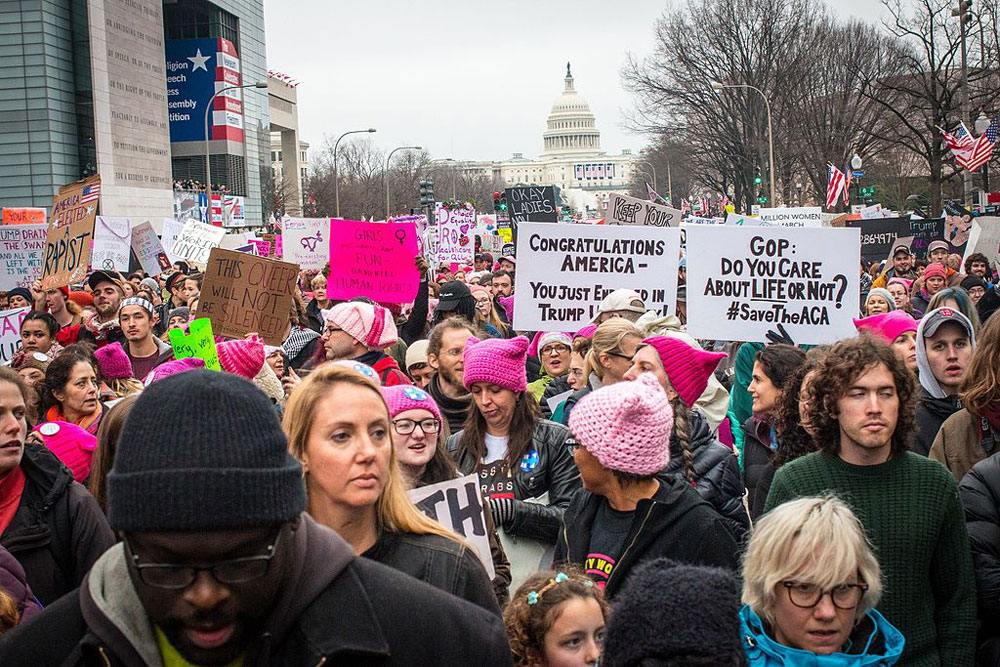
January 23, 2020; Washington Post
In a weird tempting of fate, the National Archives, charged with maintaining and curating materials on this nation’s history, has had a photograph of the 2017 Women’s March on Washington on display since May. Turns out that the photograph had been altered to remove words that expressed of disaffection toward President Trump or mentioned specific body parts. The writing on many of the protest signs was blurred or otherwise obscured.
What’s worse, the photograph was one facet of a lenticular image, meaning that what you see changes as you move around the display. From one angle, it’s the 2017 march; from another, you see the Woman Suffrage Procession from 1913. See the little ladies rise up!
The Archives told the Washington Post [last week] that it had blurred out Trump’s name “so as not to engage in current political controversy” and that it redacted references to women’s anatomy because the museum hosts students and young people and the words could be perceived as inappropriate.
Oh, okay, now we understand. They were only trying to protect The Youth from history and any balanced version of the truth—and themselves from any political flak.
Sign up for our free newsletters
Subscribe to NPQ's newsletters to have our top stories delivered directly to your inbox.
By signing up, you agree to our privacy policy and terms of use, and to receive messages from NPQ and our partners.
Understandably, historians were outraged at such an open flouting of ethics, and by last Saturday, the Archives were apologizing. Honestly, though, that such a decision was even considered, much less implemented, is shocking…though not much of a surprise.
The altered photo has been removed, and lead archivist David Ferriero insists that the decision to alter the photograph “was made without any external direction whatsoever.” He says that at the time, officials thought their decision was an acceptable and prudent choice.
You can read more of that line of nonsense here in his statement, “Accepting Responsibility, Working to Rebuild Your Trust.” Here is one revelatory moment in that long document:
We wrongly missed the overall implications of the alteration. Our action made it appear as if we did not understand the importance of our unique charge: as an archives, we must present materials—whether they are ours or not—without alteration; as a museum proudly celebrating the accomplishments of women, we should accurately present not silence the voices of women; and as a federal agency serving the American public, we must incorporate non-partisanship into everything we do.
Y’think? We are not archivists, but we can recognize an obfuscation when we see one. If, by any chance, Ferreiro has a spare moment, here, again, is a short reminder lifted from the code of ethics for archivists: Archivists may not alter, manipulate, or destroy data or records to conceal facts or distort evidence.—Ruth McCambridge












